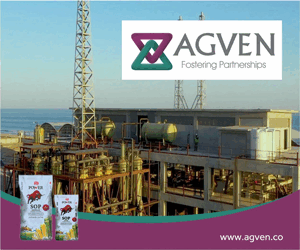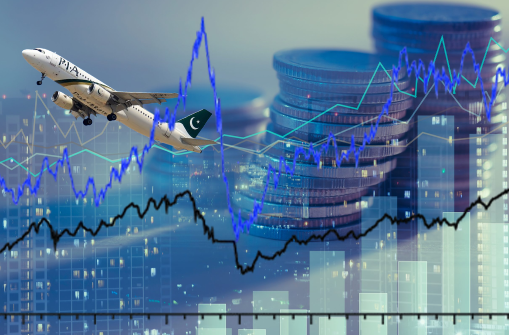- Web Desk
- Dec 31, 2024

How did Pakistan’s economy fare in 2024?
-
- Anusha Zahid Web Desk
- Dec 31, 2024

By Anusha Zahid
Pakistan appears to have navigated its economy towards stability, successfully averting the high risk of default on foreign debt repayments in the outgoing year 2024. At the same time, the country left behind tough days, improving most of economic indicators under the short-term $3 billion IMF loan programme completed in April, followed by a bigger new programme of $7 billion in July.
As 2024 came to a close, the economy is all set to enter its growth phase with the local currency staying stable within the narrow range of Rs277-279 per dollar throughout the year. In fact, it appreciated 1.21 per cent (Rs3.38) to Rs278.05 against the US dollar on December 30, 2024, compared to Rs281.86 per dollar at the end of December 2023.
The currency’s stability also reduced imported inflation and increased the affordability of imports, resulting in the growth of the import-dependent economy.
The Pakistani rupee’s year-long stabilisation stands in stark contrast to the sharp volatility of the previous 10 years, when it plunged by as much as Rs25 in a single day not long ago.
The country’s foreign exchange reserves increased to $11.85 billion on December 20, 2024, which is sufficient to cover two months of import. They are just $23 million below the 33-month high reserves of $12.08 billion in the prior week ended December 13, 2024.
The reserves had plummeted earlier to a critically low level of less than a month’s import cover at $2.92 billion in February 2023, placing the country on the verge of default on foreign debt obligations.
According to the State Bank of Pakistan, the balance of current account hit 10-year high surplus at $729 million in November 2024, suggesting the supply of US dollars in the domestic economy remained high (primarily through remittances) compared to demand for imports and to pay-off foreign debt on time.
The three-year long IMF latest Extended Fund Facility (EFF) of $7 billion ensures that Islamabad has arrangements to return external loans on time in the three years.
The central bank has reportedly purchased US dollars, almost $1 billion from domestic currency markets to absorb the surplus supplies of the greenback since June 2024, boosting the country’s foreign reserves and repaying foreign debt.
The surge in reserves – partly through export earnings and strong inflows of workers’ remittances – and acquisition of the three-year long new IMF programme in July have also made global credit rating agencies including Fitch Ratings and Moody’s upgrade Pakistan’s credit ratings within the category ‘C’ in July-August 2024, indicating that the risk of default on the debt obligations has faded away.
Later on in September 2024, Pakistan received the first tranche of $1.03 billion from IMF, boosting its reserves and strengthening its capacity to make international payments smoothly. Also, the inflation reading decelerated to six-and-half-year low at 4.91 percent in November 2024 compared to four-decade high hit at 38 percent in May 2023.
The significant slowdown in the reading created a big room for State Bank of Pakistan (SBP) to have cut its key policy rate (interest rate) by a massive 9-percentage points in just six-month to 13 percent in December 2024 from record high at 22 percent in June 2024. The notable rate cut made the bank borrowing relatively feasible for the private sector, increasing the possibility of expansion in business and economic activities in the country.
Last but not the least, such all the happenings and achievements in the domestic economy kept reflecting at Pakistan Stock Exchange (PSX), fuelling the benchmark KSE 100-Index briefly touching all-time high at above 117,039 points in mid of December 2024. It soared 85 percent over the year under review to close at 115,259 points on December 30, 2024 compared to 62,451 points at the end of December 2023.
Thanks to the former caretaker prime minister Anwaarul Haq Kakar and former caretaker finance minister Dr Shamshad Akhtar and their teams for putting in place measures to revive the faltering economy from August 14, 2023 to March 4, 2024. The crackdown against foreign currency smugglers begun in September 2023, who were draining out foreign currency reserves to neighbouring countries, was the beginning point towards the economic turnaround, success and stability achieved later in the year 2024.
The interim government devised a strategy to limit imports at equivalent to the sum of export earnings and inflows of workers’ remittance to fix the economic crisis, fuelled by significantly high current account deficit and plunge in forex reserves. The control over imports and crackdown against illegal hawala-hundi operators proved to be the two major winning measures towards the current state of stable economy.
The partial return of political stability achieved through parliamentary polls in February also supported the economy to advance stability and consolidation in the year 2024. The new government continued the economic legacy and took ownership of the economic engineering done by the caretaker government, and has been claiming victory on economic front recently.
Downside of the domestic economy
On the flip side, the stability was achieved at the cost of economic growth. This rendered a large number of people jobless and/or kept a notable number of youngsters out of the job market, increasing poverty to 40 percent of the total 240 million people population during the year 2024, reported the World Bank.
Pakistan was to repay a huge sum of $26 billion in foreign debt in FY24, including rollovers and acquisition of new commercial loans. It has already paid a significant portion of this, but some large repayments ahead may slow down boost in forex reserves towards the end of current fiscal year ending June 30, 2025.
The lack of attention by higher authorities in the agriculture sector messed it up and squeezed its high growth potential – especially in cash crop of cotton and staple crop of wheat. The nation overcame the cotton crises through Imports worth over $2 billion in FY24, limiting growth in the reserves.
The government’s privatisation agenda has badly been failed, losing control over financial losses to the tune of Rs1 trillion going to the loss-making state-owned entities. PIA failed sell-off and no progress on Pakistan Steel Mills privatisation are top examples on this front.
Corruption within the Federal Board of Revenue (FBR) has been pervasive. Recently, Finance Minister Muhammad Aurangzeb urged the business community to refrain from offering bribes to FBR officials in order to expedite their processes. It is important to note that Pakistan has the potential to collect more than Rs12.9 trillion in taxes, but bad practices have caused the collection of revenue shortage of Rs400 billion against the set target.
Outlook 2025
The government plans to extend the period of economic stability and solidify the economic gains instead of shifting the steady economy into a high growth phase in 2025, in an effort to stabilise foreign exchange reserves.
If the government attempts to expand the economy through larger imports, this will again widen current account deficit and drop forex reserves and lose the recent economic gains.
SBP projects the country’s economy to tick up in the range of 2.5-3.5 percent in the ongoing fiscal year FY24-25 amid significant repayments of foreign debt and lack of dollars to financing the import-led economy.
The moderate growth outlook is evident from the latest GDP growth trends in FY25. According to the latest official numbers published on December 30, 2024 by Reuters, the country’s economy grew merely by 0.92 percent in the first quarter (July-September) of the current fiscal year 2024-25. The growth in agriculture and services sector increased 1.15 percent and 1.43 percent, respectively. The industrial sector, however, contracted 1.03 percent, suggesting the sector needs government attention to recover and revive hopefully in 2025.
In a recent interaction with media, Finance Minister Muhammad Aurangzeb avoided giving a timeline for transforming the stable economy into growth phase, suggesting the gains would get consolidated in 2025.



